I was lucky enough, just recently, to visit Beth Chatto’s Nursery and Garden near Colchester in Essex. It should be a place of pilgrimage for every gardener but, if the only way isn’t Essex, there are plenty of tempting, expertly-grown plants on offer on the nursery’s website. The conditions within this 7-acre garden vary between dry gravel, shady woodland and damp streamside. The plants sold on the nursery are subdivided too, which makes it easier to find plants for particular situations, and there are lists of shade plants, sun lovers and moisture-loving plants on their website. www.bethchatto.co.uk
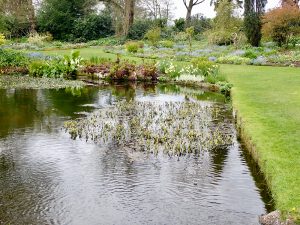
The late Beth Chatto (1932-2018) was best known for her ecological ‘right plant right place’ approach to gardening. Beth credited her husband, Andrew Chatto, because he studied native flora in various parts of the world right up until his 90th year. In old age, his health declined and this gave Beth the opportunity to develop the woodland garden, an area previously out of bounds. She’s a woman after my own heart.
Beth Chatto was a ‘plantaholic’ with an artistic eye and flower arranging was her first passion. She lectured to flower clubs across England and her audience wanted to grow the plants she used in her displays. In 1967, Beth produced a small hand-typed sheet and that led on to her mail order business and plant nursery.
In January 1975 Beth staged her Unusual Plants exhibit at an RHS Vincent Square show, earning a Silver Medal. This led to ten consecutive Gold Medals at the Chelsea Flower Show, beginning in 1997. Her background as a flower arranger allowed her to put together plant combinations that pleased the eye and she didn’t concentrate on flower alone.
Beth blended foliage and form as well and this was new, because floral exhibits at the time were flower-packed affairs with plenty of black baize showing. Cadence and contrast were her bywords and she inspired many young exhibitors including the late Alan Street of Avon Bulbs, who passed away last year. Alan went on to get 30 Gold Medals at Chelsea – always aiming for cadence and contrast.
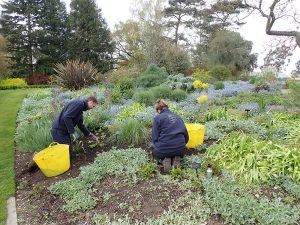
Beth’s plant catalogues were a highlight in my life from the 1980s onwards. Who could resist buying Astrantia major alba when she described it as ‘looking like old-fashioned posies…with quivering green centres’. And who else could write that the leaves of the dainty Aruncus dioicus ‘Kneiffii’ look as though they have ‘been eaten to the veins by some creature’. She writes that the helenium, ‘Moorheim Beauty’, has ‘brown velvety central knobs… surrounded by rich orange-red petals when fresh… fading to amber.’ Not surprisingly her books were best sellers too, because this plants woman had a way with words.
We’re used to arty descriptions now, but thirty years ago most garden writing was dull. It usually said something akin to dig a hole and plonk it in! Beth inspired me to put pen to paper in the mid-1990s and, if I wrote something she liked or covered a plant on her nursery, she would write to me. If I visited the nursery, she would sit on the bench and chatter, but I was a little overwhelmed and said very little. Could I go back in time please and have a proper conversation.
I have never been a flower arranger, because I hate cutting my flowers. I go out armed with scissors, secateurs and a bucket of water and come back with – nothing. However, the nurseryman and plantsman Bob Brown of Cotswold Garden Flowers, became a member of a flower club specifically to train his eye to look for detail. I cannot imagine how the flower ladies of Cheltenham responded to the twinkly-eyed, bearded nurseryman. Bob, a wonderful horticultural speaker by the way, is a man not short of an opinion. I say that with kindness by the way, because I suffer from the same affliction! No offence is intended, Bob. Pot, kettle black and all that.
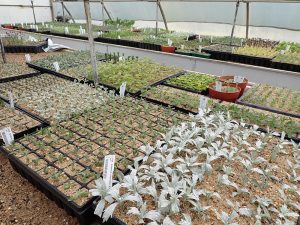
Bob Brown also wrote wonderful plant descriptions in his early catalogues. He described the pink oriental poppy, Raspberry Queen, as ‘Barbara Cartland – leaning slightly – with running mascara’. Oriental poppies and I have history. In the days before Chris Philip established the Plant Finder in 1992, I would scour nurseries and collect plants from one genus. I would spend two years buying campanulas, for instance, so I could run my own mini trial. Once over, I would dig them up and go on to other things and this was a good learning curve for me.
All went well, until I gathered together 20 oriental poppies for my personal assessment. They’re a variable bunch, ranging from delicate to monstrous. I loved ‘Karine’ for her shell-pink shallow saucers blotched in beetroot-red. Howeve, I thought ‘Cedric Morris’ was a dingy thing. The artist-gardener, friend and mentor of Beth Chatto, Sir Cedric Morris, called his seedling ‘dirty knickers’. Beth was kinder: she said it was grey-pink and commended it for making ‘a dramatic feature in the grey garden’. ‘Karine’ is not available any more. It was wiped out by downy mildew, along with many named oriental poppies, roughly twenty years ago. British and European nurseries suffered equally badly and the Plant Heritage Collection holder, Sandy Worth, lost most of her collection in less than a year.
When my own personal trial of oriental poppies ended, I dug them up. However, they returned for years, from fragments of root. The more I dug them up, the harder they fought back. ‘Beauty of Livermere’, which resisted the fungal wipe out, is show-stopping post-office box red, but difficult to place because it draws your eye a little too enthusiastically. The words ‘stands out like a sore thumb’ come to mind. It doesn’t sit well, because it’s too dominant.
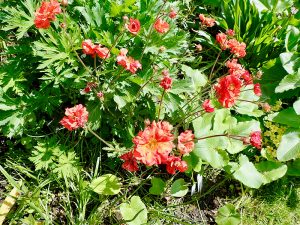
I have planted a red geum named ‘Scarlet Tempest’, acquired from Hardy’s Plants. This sterile hybrid geum, which arose on Elizabeth MacGregor’s Scottish nursery in Kirkcudbright, flowers from April until June and then produces a second, smaller-flowered flourish in September. The scarlet flowers are frilly and they soften to a warm-red. However, it’s a plant without any grace or poise and my spade is hovering above it on a daily basis. Where to put it is the question.
Plants that jar the eye are hard to weave into a border. I struggle with grey-leafed dicentras for the same reason. They flower in spring and this is the season for vivid-green foliage – not slate-grey. I want to dig them up in other people’s gardens and replace them with ferny green bleeding hearts like ‘Luxuriant’ or Bacchanal’. Perhaps one day I will.
Those purple-leafed, ornamental cherries, with the candy-pink flowers, come into the ‘stand-out and shout’ department too. Far better to plant the gentle ‘Shirofugen’ instead, with its pendent clusters of white flowers that age to pale-pink. Like tiny Japanese parasols suspended on wires.
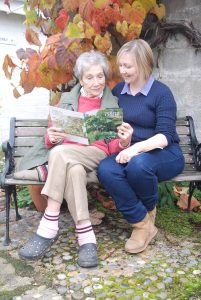
c. Chatto Gardens
Following Beth’s passing, I’m delighted to say that her garden and nursery are both in good heart. Beth’s hard-working granddaughter, Julia Boulton, has taken over the management side and Åsa Gregers-Warg is the brilliant Head Gardener. Marc McHearne manages plant production and roughly 80% of everything sold here is propagated here. The nursery is using peat-free, which I commend because it’s harder to work with. Levington’s peat-free compost is my current go-to.
There are always treasures and I acquired a ‘new-to-me’ copper-headed spring-flowering spurge, Euphorbia x arendsii. It’s hybrid between E. wallichii x E. griffithii ‘Dixter’ and I’ve slotted it in to the autumn border. It hasn’t shouted at me yet.



